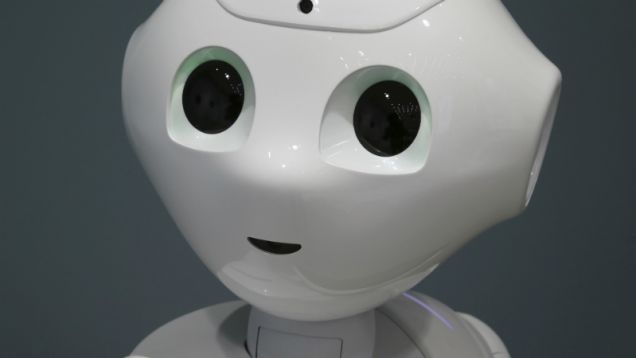Linden Labs is starting from scratch with Project Sansar, a new platform for the coming virtual reality world.


Linden Labs is starting from scratch with Project Sansar, a new platform for the coming virtual reality world.

When scientists spotted this pair of black holes, it was a rare chance to observe black holes in the process of colliding. Soon, however, as they looked closer, scientists were consumed with a brand new question: Uh, hey, what’s that blinking light?
The light isn’t coming from the pair of colliding black holes (named PG 1302-102) 3.5 billion light years away from us, it’s coming from the turbulence around them. What that doesn’t explain, though, is why the light “flashes” rhythmically—regularly brightening, then dimming. So researchers Daniel D’Orazio, Zoltan Haiman, and David Schiminovich at Columbia University built a simulation of the pair and have now come up with an explanation for just what we’re seeing.
It’s the orbit of the black holes.
https://www.youtube.com/watch?v=vtyGst3lYVo

Invisibility cloaks are a staple of science fiction and fantasy, from Star Trek to Harry Potter, but don’t exist in real life, or do they? Scientists at the U.S. Department of Energy (DOE)’s Lawrence Berkeley National Laboratory (Berkeley Lab) and the University of California (UC) Berkeley have devised an ultra-thin invisibility “skin” cloak that can conform to the shape of an object and conceal it from detection with visible light. Although this cloak is only microscopic in size, the principles behind the technology should enable it to be scaled-up to conceal macroscopic items as well.
Working with brick-like blocks of gold nanoantennas, the Berkeley researchers fashioned a “skin cloak” barely 80 nanometers in thickness, that was wrapped around a three-dimensional object about the size of a few biological cells and arbitrarily shaped with multiple bumps and dents. The surface of the skin cloak was meta-engineered to reroute reflected light waves so that the object was rendered invisible to optical detection when the cloak is activated.
“This is the first time a 3D object of arbitrary shape has been cloaked from visible light,” said Xiang Zhang, director of Berkeley Lab’s Materials Sciences Division and a world authority on metamaterials — artificial nanostructures engineered with electromagnetic properties not found in nature. “Our ultra-thin cloak now looks like a coat. It is easy to design and implement, and is potentially scalable for hiding macroscopic objects.”

“The current benchtop cell sorters are too expensive, too un-safe, and too high-maintenance. More importantly, they have very low biocompatibility. The cell-sorting process can reduce cell viability and functions by 30–99 percent for many fragile or sensitive cells such as neurons, stem cells, liver cells and sperm cells. We are developing an acoustic cell sorter that has the potential to address all these problems.”
Researchers describe an acoustic cell sorter capable of the kind of high sorting throughput necessary to compete with commercial fluorescence activated cell sorters.

I’ve waited YEARS for someone to finally bring this to the big or little) screen, and from everything I’ve seen so far, it looks to be one hell of an awesome miniseries. Fantastic cast, too. If you’ve never read the (quite short) novel it’s based in, by Arthur C. Clarke, do so immediately. It premiers on the SyFy channel this December.
You won’t be disappointed.
That said, you also may never be able to look at your kids again without a little bit of involuntary existential trepidation. wink
Check out the teaser for Childhood’s End, starring Charles Dance of Game of Thrones.
» Subscribe To Syfy: http://po.st/A8uSSN
Written by Arthur C. Clarke and hailed as a revolutionary work of science fiction since its publishing in 1953, Childhood’s End follows the peaceful alien invasion of Earth by the mysterious “Overlords,” whose arrival begins decades of apparent utopia under indirect alien rule, at the cost of human identity and culture.
Syfy: Imagine Greater with us!
Visit Syfy.com: http://bit.ly/VisitSyfy
Find Syfy on Facebook: http://bit.ly/LikeSyfy
Follow Syfy on Twitter: http://bit.ly/FollowSyfy
Follow Syfy on Google+: http://bit.ly/PlusSyfy
Follow Syfy on Instagram: http://bit.ly/InstaSyfy
Follow Syfy on Tumblr: http://bit.ly/TumblrSyfy
Connect with Childhood’s End:
Like: https://www.facebook.com/ChildhoodsEndSyfy
Follow: Twitter — https://twitter.com/childhoodsyfy
CHILDHOOD’S END Trailer | The Golden Age — Coming In December 2015 | Syfy.

The Japanese humanoid robot Pepper, which sold out of its first 1,000 units in one minute in Japan this June, will get a personality makeover for the US market: it’ll go from cute and bubbly to snarky and sarcastic, MIT Technology Review reports.
Editor Will Knight met a Pepper unit in Boston this week, and reported back some very distinct changes in the robot’s personality designed to make it more appealing to Americans: High fives instead of bows; smartass swipes instead of songs. In the MIT report, Knight said he asked an Americanized Pepper if it’s like Terminator, to which it responded: “Do I really have to answer that?”
Pepper is a robot that’s designed to recognize human emotions, and is supposed to read social situations so it can interact with you like a person can. And since people already ask Siri questions that get sassy comebacks, Pepper’s gotta be ready.

Another excellent blog by Dr Michael fossel PhD, md. Alzheimer’s, Parkinson’s and other related diseases could be treated potentially using telomerase.
Date posted: 25.08.2015.
Most of us have wondered about what causes Alzheimer’s. As commonly happens, we stumble badly when we make assumptions, even in asking questions, let alone in trying to answer those questions. The question “what causes Alzheimer’s?” presupposes that there is a single such disease (Alzheimer’s) and that we can define it well enough to ask about “its” cause. Neither of these is probably an accurate assumption. The reality is that there is considerable difficulty in agreeing on the “hallmarks” (the pathognomonic characteristics that define AD) and the “boundaries” between AD and other somewhat similar diseases on the differential diagnosis. Comparing Alzheimer’s to many other age-related neurological diseases can be humbling – and it should be. Small wonder we have so much trouble understanding the cause, let alone finding a cure when we don’t really know what we’re looking at.
Edit: some have commented asking about neurons. Please see the article linked above and the following articles for more information. We probably should have tried to clarify the unknowns more in the image itself. Apologies.
Jolene
http://www.ncbi.nlm.nih.gov/pubmed/12031270
http://m.jneurosci.org/content/22/3/624.full

Scientific discoveries that remain unexplained… (HD — 03/2015)
FOLLOW THE HYBRID LIBRARIAN:
Subscribe ▶ http://bit.ly/daretoknow
Facebook ▶ http://on.fb.me/170IAJK
Twitter ▶ http://bit.ly/14vhMgZ
Google+ ▶ http://bit.ly/15eoHil
Tumblr ▶ http://bit.ly/11UtNr1
HYBRID LIBRΛRIΛN’s new T-shirts & merch are now available! (Both shops can be used wherever you’re from):
▶ US shop: http://bit.ly/1A1MET0
▶ EU shop: http://bit.ly/W6t2zF
For business inquiries and music collaborations, please contact me at: [email protected].
Kevin ツ
(Hybrid Librarian©)